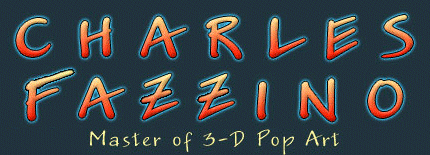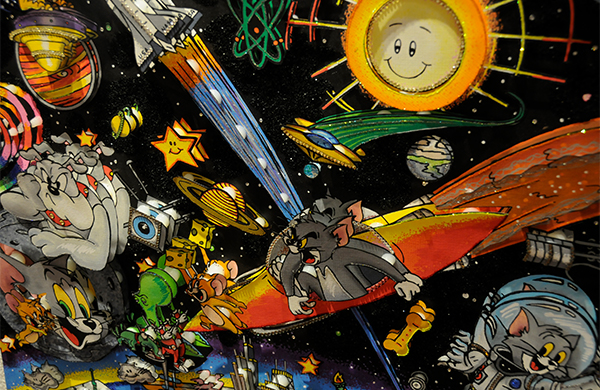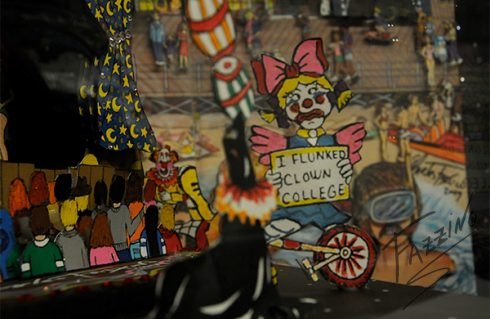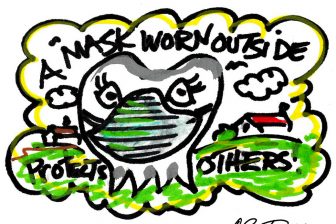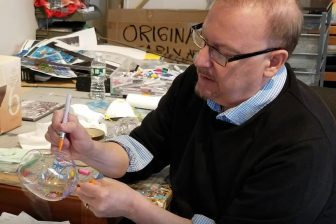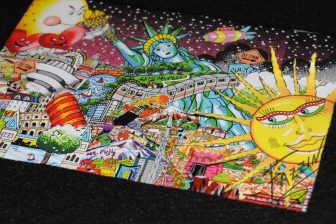Students in the New Rochelle school district are being treated to a lesson in fine art from an internationally renowned pop artist who just happens to live next door. The MAC Gallery at New Rochelle High School formally opened the “3D World of Charles Fazzino” art exhibit last week and elementary and middle school students from throughout the district are taking tours learning about the Fazzino 3D process. Part of their “classroom project” involves filling out the following questionnaire created by New Rochelle Art Teacher and MAC Gallery Director Laura Heiss.
As you walk through the gallery, examine the artwork closely. You will find many of the pieces describe cities, the Olympics, and other major sporting events. Look for the repetition of objects that are Mr. Fazzino’s favorites. Some of them are hot air balloons, kites and taxi cabs!
Look closely at the way Charles Fazzino make the objects POP off the paper. Here are some questions to help you examine and learn about his artwork.
- Can you see tiny blobs of glue between the layers?
- How many layers does he uses? Describe what you see.
- Mr Fazzino’s use of line and color add to the excitement of his pieces. What colors does he use?
- How does he fill his space?
- What other details help POP his paintings?
- What adjectives can you use to describe his paintings? Jot down 3.
- How does the artist create a feeling of distance or perspective?
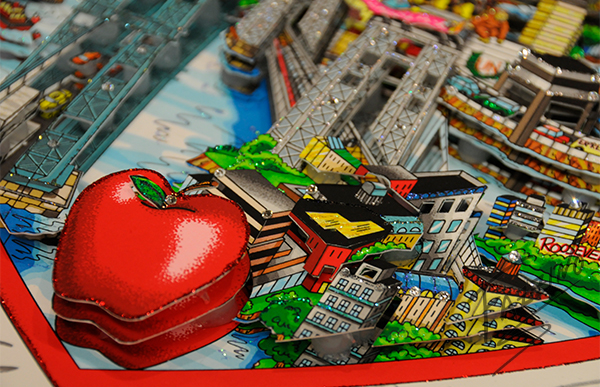
- What was your first reaction to his style?
- How does the artist move your eye through the paintings?
- Pick one of his works and write a few words about why you like, or don’t like it.
- If you could add music or sound to this piece, what would it be like?
- Charles Fazzino’s art works each tell a story. Tell us the story of the one you have chosen by looking at all the details .
- How would it feel to be in this piece of art?
- If you could ask the artist one question, what would it be?
Participation in exercises like this one invites students to really think about creativity…what inspires it…and how it manifests in reality. The questions promote conversations about thought process and problem solving, and hopefully, inspire students to aspire to find their own creative outlets.
Tell us what you think! Share your thoughts on our Instagram, Twitter, or Facebook for more!

